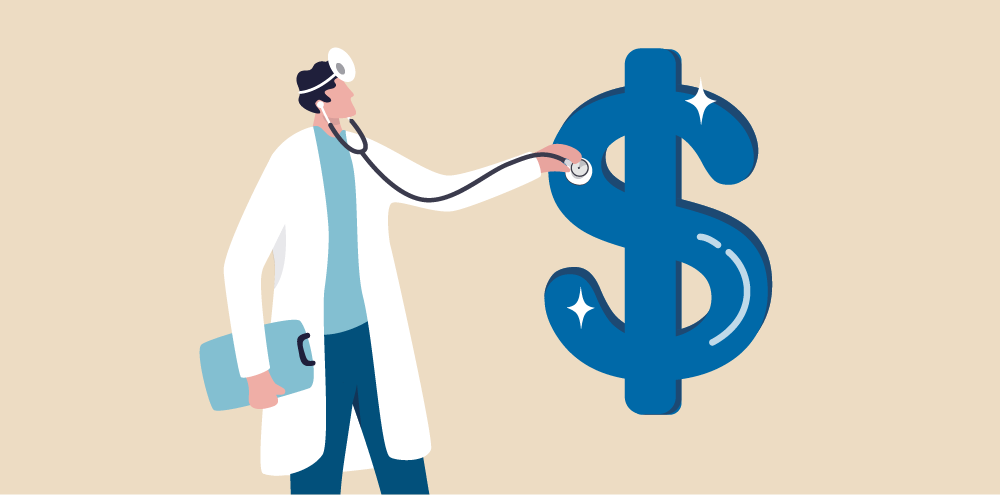If you run a medical practice, you know the pain of chasing payments and wading through insurance paperwork. It often feels like you’re running two offices at once – one for patient care and one for billing. It’s no wonder that nearly two-thirds of doctors cite administrative work and manual processes as their top source of burnout. The good news? A wave of financial technology (fintech) solutions is coming to the rescue, bringing automated payment tools that simplify revenue cycle management (RCM) for even the smallest practices. In this post, we’ll explore how fintech-powered payment automation is transforming healthcare payments, easing the burden on practices, and letting doctors get back to doctoring.
The Pain of Payment Chaos in Medical Practices
Small and mid-sized healthcare practices face unique challenges in getting paid. Healthcare costs are higher than ever – U.S. healthcare spending hit $4.8 trillion in 2023 (about $14,423 per person) – yet a huge chunk of that is swallowed by bureaucracy. In fact, over one-third of all healthcare costs in the U.S. go to administration (insurer overhead, billing, coding, etc.). For a practice with limited staff, that administrative bloat isn’t just a statistic; it’s a daily reality.
Why is billing so cumbersome? A big culprit is the lack of standardization. Harvard economist David Cutler famously compared our patchwork payments system to a grocery store where “every health insurer requires a different bar-code-equivalent and payment-systems submission” (How fintech can transform healthcare payments – United States – English). In other words, every payer has its own forms, codes, and portals. This complexity forces even providers to hire billing specialists just to file claims and chase down payments. It’s an expensive, time-consuming hassle.
Meanwhile, the rise of high-deductible insurance plans means practices rely more on patients to pay directly – and many patients struggle to keep up. One industry report noted that patients with high deductibles often don’t budget for medical bills as they would under low-deductible plans. Not surprisingly, some patients simply delay or skip payments altogether. A recent study found 33% of patients put off needed healthcare mostly because they couldn’t afford the costs upfront. For a practice, that can mean more unpaid bills and write-offs.
All this adds up to a cash-flow headache. Slow reimbursements from insurers, delayed or missing payments from patients, and mountains of paperwork in between. Doctors and office managers end up spending evenings and weekends on billing. (A 2018 survey showed 70% of doctors spend 10+ hours per week on paperwork.) It’s easy to see why burnout is rampant and why many small and mid-sized practices feel financially squeezed.
Fintech to the Rescue: Automating the Revenue Cycle

Enter fintech – the marriage of finance and technology – with a promise to simplify and streamline healthcare payments. Fintech companies and platforms are tackling the inefficiencies of the traditional RCM process head-on, and even small practices can reap the benefits. In fact, modern RCM automation is scalable and accessible to organizations of any size, “beneficial for small practices by reducing errors, improving cash flow, and freeing staff for patient care” (Healthcare Revenue Cycle Automation: Boost Efficiency with AI & RPA).
So, how exactly can fintech transform a clinic’s payment process? The key is automation and digital integration. Instead of paper statements and manual data entry, digital payment platforms create a seamless flow from patient billing to payment posting:
- Automated Invoicing & Claims: Platforms like Camber can auto-generate bills and even file insurance claims with minimal human input. This reduces human error (no more typos in codes or missed charges) and speeds up reimbursement. As one analysis noted, fintech can accomplish this through automated invoicing, billing and payment processes that eliminate manual inputs – and simply cutting out human errors can speed up claims and help providers get paid faster. A cleaner claims process means fewer denials and quicker turnaround from insurers.
- Shorter Revenue Cycles: Digital payments take the waiting out of billing. Rather than mailing an invoice and hoping a check comes back in 60 days, practices can send electronic bills instantly and often get paid just as fast. Fintech solutions like Thrivory create what is essentially a real-time payments system for healthcare. This level of transparency and immediacy shortens the revenue cycle dramatically. According to Convera, digital payment tools streamline the process and allow patients to understand their coverage and schedule payments or pay balances in installments, while ensuring providers send bills to the right payer promptly. The result is that providers aren’t left waiting and wondering – they know when a payment is scheduled and can better predict cash flow.
- Data Integration & Interoperability: One reason offices drown in admin work is that systems don’t talk to each other. Fintech is changing that with more interoperable designs (often leveraging open banking APIs and healthcare data standards). In plain English, this means your billing software, patient portal, bank, and even EHR can share relevant info securely. No more manually reconciling accounts or double-entering data with solutions like Anatomy. For example, some platforms like Flychain integrate with (or even replace) QuickBooks or practice management systems to automatically log transactions. When a patient pays their bill online, the ledger updates automatically – saving your office manager the step of bookkeeping. Fintech’s emphasis on integration also means less paper overall. (About half of U.S. patients still receive old-fashioned paper medical bills by mail, even though 79% say they’d prefer to pay all their bills in one digital location. Fintech solutions are closing this gap by offering the unified digital experiences consumers clearly want.)
Crucially, these innovations maintain security and compliance behind the scenes. The best healthcare fintech tools are HIPAA-compliant, using encryption and secure authentication, so practices don’t have to worry about trading security for efficiency. The bottom line is that automation is taking over the heavy lifting of RCM. Instead of piles of claims and invoices, you get a smoother flow of funds from patients and payers to your bank account – with far fewer staff hours expended.
More Time for Patients, Less on Paperwork
Perhaps the most profound impact of automated payment solutions is the gift of time. Every hour your practice saves on billing and insurance tasks is an hour gained for patient care (or at least an hour saved from your team’s stress levels). Fintech is effectively outsourcing the busywork to software – and doing it faster and often more accurately than a human could.
Consider this: 10 hours a week on paperwork (the figure 70% of physicians reported) adds up to 480+ hours a year. That’s a lot of clinic time that could be spent seeing additional patients, coordinating care, or just improving work-life balance for you and your staff. By automating much of the RCM process, fintech shrinks that administrative load. Claims go out faster, payments come in sooner, and many tasks (like verifying insurance eligibility or sending out receipts) happen in the background without manual effort.
Accuracy also improves, which has a domino effect on efficiency. Fewer billing errors means fewer claim denials to chase and fewer patient phone calls about mistakes. As fintech expert Joe Tuan explains, by reducing errors and improving workflow, automation in RCM directly leads to better cash flow and frees staff to focus on patient care. In a small practice, you might not have a dedicated billing department – it could be your front-desk person doubling as billing specialist. Taking those repetitive tasks off their plate allows them to concentrate on scheduling, patient outreach, and other valuable activities that a machine can’t do.
One overlooked benefit is the data these digital systems provide. When your payments are handled through modern platforms, you gain real-time visibility into your financial performance. You can easily see metrics like days in A/R (accounts receivable), collection rates, or outstanding balances by age. Sophisticated fintech systems even use analytics to flag trends – for example, if a certain insurance company is slow to pay or if a type of procedure is often denied. Having this information at your fingertips allows practices to make quicker decisions (perhaps time to drop a bad payer contract, or to follow up with certain patients sooner). Traditional RCM often left small providers in the dark until problems became severe. Fintech brings actionable insights, typically through simple dashboards. As a result, managing the business side of a practice becomes less reactive and more proactive.
Most importantly, reducing administrative strain helps combat burnout. Doctors and staff can end their day when the last patient leaves, rather than staying late to tackle billing logs. As one healthcare CEO put it, “with proper use of fintech, medical professionals can spend less time on administration and more time on quality care.” (Top 4 Ways Fintech is Enhancing Healthcare | Plutus Health Inc) For anyone who’s felt the creep of paperwork into their personal time, that’s a game-changer. It means a healthier work environment and potentially better patient outcomes too – because a practice that isn’t financially stressed or overwhelmed by admin is more likely to deliver attentive, focused care.
Key Takeaways: Fintech Transformations in Medical Practice Payments

- Automation Accelerates Cash Flow: By digitizing and automating billing, claims, and collections, fintech shortens the revenue cycle. Fewer errors and instant transactions mean faster payments – insurers pay more quickly and patients are prompted to pay promptly, boosting cash flow.
- Less Admin Work (and Less Burnout): Fintech payment solutions dramatically cut down manual tasks. Practices can reduce tedious billing work (one report shows RCM automation is feasible even for small clinics, freeing staff for patient care) and avoid the nights/weekends spent on paperwork. This leads to lower stress and allows your team to focus on clinical duties and patient interaction.
- Higher Collection Rates: Offering flexible payment options (online payments, payment plans, financing) translates to more bills being paid. Patients are more likely to follow through when they have easy ways to pay or can spread out a big bill. Fintech-facilitated plans have been shown to increase collection rates and even speed up payments to providers, meaning fewer receivables languishing in the books.
- Improved Patient Experience: A smooth, transparent payment process is part of great patient service. Fintech tools help demystify medical bills and provide convenient channels to pay – meeting patients’ expectations (remember that 79% of consumers want a one-stop digital platform for bills). Patients who find billing easy and fair are more likely to stay loyal to a practice and recommend it to others. In this sense, simplifying payments isn’t just a finance win, it’s a marketing win too.
- Future-Ready Practices: Embracing fintech now positions medical practices for the future of healthcare. As trends like telehealth, high deductible plans, and consumer-centric care continue, having a robust, tech-driven payment infrastructure will be critical. It ensures you can adapt to new models (like subscription-based care or outcome-based payments) with minimal friction. Essentially, fintech gives even a solo practice the tools of a big healthcare system, leveling the playing field in business operations.
A Closing Thought
At the end of the day, simplifying healthcare payments is about freeing practices from the admin swamp that’s been dragging them down for years. Fintech isn’t some far-off promise; it’s here now, delivering real improvements in how doctors get paid and patients pay for care. A process that used to be defined by paper cuts, phone tag, and long waits is turning into one of instant notifications and seamless clicks. For a small practice struggling with limited staff and tight margins, these changes are nothing short of transformative. It means fewer billing headaches, steadier cash flow, and more time for what truly matters – caring for patients. In a healthcare environment where every minute and every dollar counts, fintech-powered payment solutions might just be the prescription for success that medical practices have been waiting for. And that’s something worth sharing.
Sources
U.S. healthcare spending rises to $4.8 trillion in 2023, outpacing GDP | Reuters
More than a third of U.S. healthcare costs go to bureaucracy | Reuters
How fintech can transform healthcare payments – United States – English
The Biggest Revenue Cycle Challenges for Small Practices
FinTech Financing Options Ease Healthcare Practices’ Payer Pains | PYMNTS.com
Top 4 Ways Fintech is Enhancing Healthcare | Plutus Health Inc
Healthcare Revenue Cycle Automation: Boost Efficiency with AI & RPA
Fintech in Healthcare: A Game Changer for Patient Services

